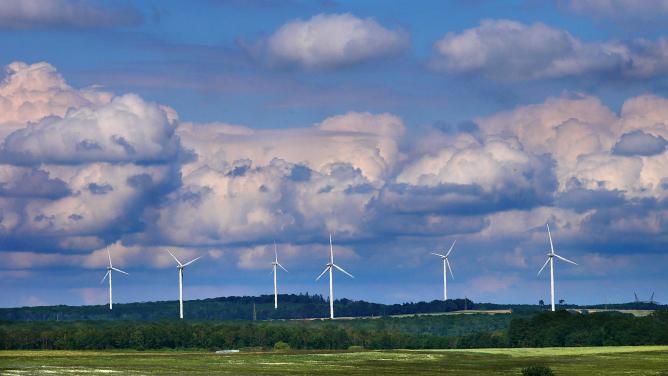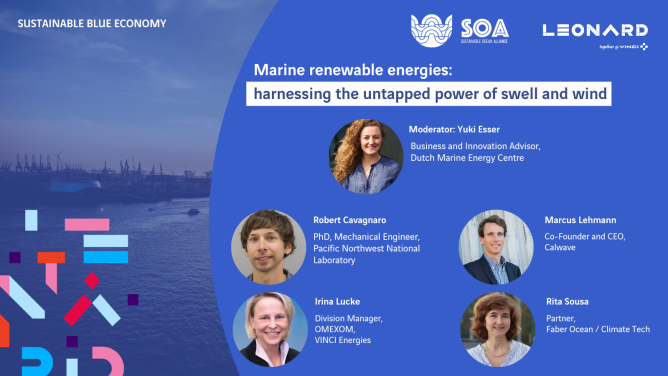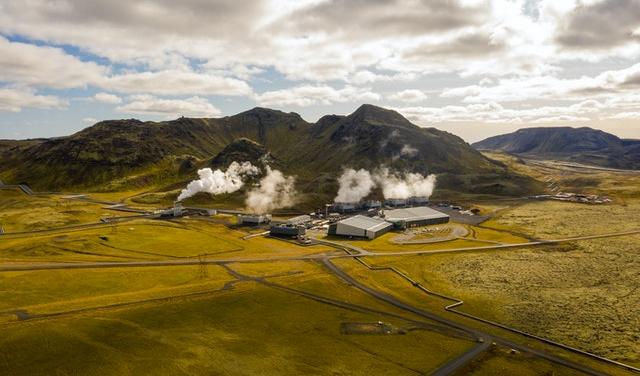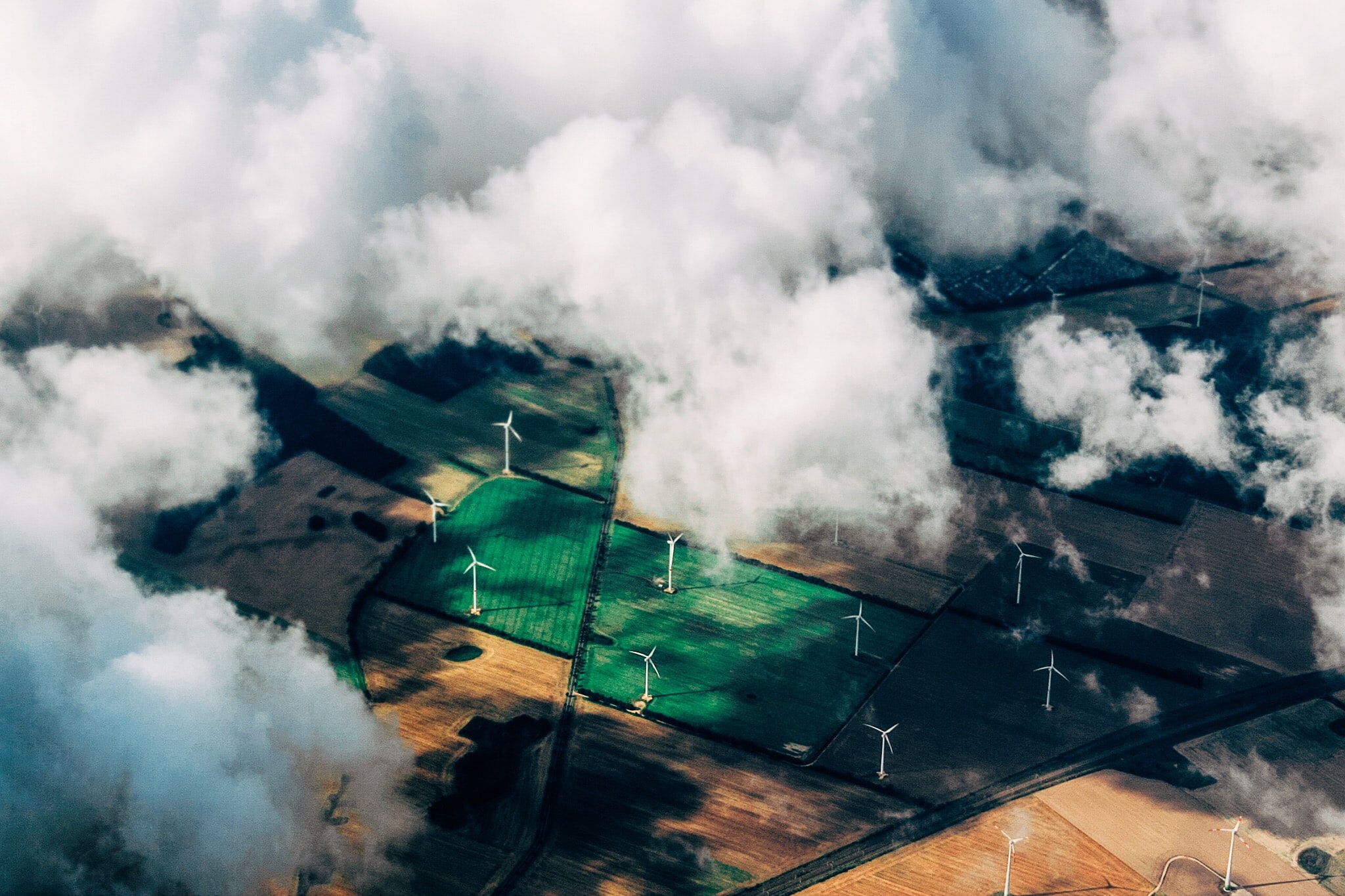
Renewable energy sources leaving a mark
Energy infrastructure takes up space. While the issue of land use is not new, it’s now taking on an unprecedented scale with the development of renewable energy and the rapid growth in electricity use. However, not all energy sources have the same land use footprint. Recent UNECE data shows significant differences – often to the disadvantage of renewable energy sources. Nuclear and gas are the least space-intensive energy sources with 0.3 and 1 m² per MWh respectively. Next come solar photovoltaics (between 12.6 and 22m² per MWh, depending on the type of installation), hydropower (between 14 and 33m² per MWh) and coal power (between 15 and 21m² per MWh) which requires large mining areas. Wind power is more difficult to measure, because the space between turbines can often be used for other activities such as farming (the data varies between 8.4 and 184m² per MWh depending on the wind farm). On a global scale, a recent article published in PLOS One estimates that the space required for the deployment of energy infrastructure by 2050 falls within the same order of magnitude as the value projected for urban expansion.
Cultivating agrivoltaism: agricultural land mucking in
Energy infrastructure currently occupies about 0.4% of free land worldwide, compared to 30 to 38% for agricultural land use. This ratio is set to change in the coming years and raises several fundamental questions. How can we avoid developing renewable energy sources to the detriment of food security (in particularly with the development of biofuels which are sometimes more profitable for farmers than food and therefore their production is favoured)? How can we facilitate a coexistence between agricultural activity and energy production? These major challenges go hand in hand with the emergence of a new practice with an explicit name: agrivoltaism. Amongst the most common practices, farmers are growing crops in the shade of solar panels, installing photovoltaic greenhouses and even combining livestock farming with solar and wind power installations. The topic is now the subject of a regulatory framework aimed at laying down safeguards. In France, the debate seeks to strike a balance between food sovereignty and energy sovereignty. Amendments to the draft bill relating to the acceleration of renewable energy production provide for the reversibility of installations, for “maintaining the current and future agricultural potential of the lands concerned“, and for limiting installations to “uncultivated” areas have been adopted.
Renewables and land speculation
Competition for land conducive to renewable energy production could quickly become the very things that hampers their development. If we take the example of Germany, a country well positioned on the subject, we’ll see it’s particularly striking. A study by McKinsey identified that 51% of the country’s land is potentially suitable for wind farms. However, this figure drops to 9% when environmental constraints, regulatory issues and technical factors are taken into account. This scarcity, coupled with new interest, has pushed up non-residential land prices (+10% in Germany and the US between 2011 and 2020). Added to this is ever-changing regulations and bureaucratic processes that could put the brakes on renewable energy development. According to McKinsey, the time it takes to obtain a permit for a wind turbine in France is eight years.
The African paradox
While 650 million Africans do not have adequate access to electricity, Africa represents a priviledged site for renewable energy development. Land availability is less of a problem than it is in Europe or the US. However, “security” is the main thing slowing down investments. A recent report by the NGO Land Matrix shows that 8 out of 10 land deals are not in compliance with international guidelines on the continent, which considerably increases the risk of litigation for investors. In a similar vein, the question of social justice (often flouted) is unavoidable and requires significant education on the public interest of renewable energy development.
Roofs and motorway verges: interstitial space as a solution
Faced with land constraints, renewable energy is looking to abandoned spaces for a solution. Roofs and the immediate proximity of major transport routes are the most promising areas right now. The SNCF, which today has 19,000 hectares of land, is committed to the idea. In Le Mans, the abandoned Arnage marshalling yard and its 30,000 photovoltaic cells is emblematic of the phenomenon. The French Army is also taking part in the effort, by freeing up nearly 2,000 hectares to help increase the photovoltaic fleet. Meanwhile, roofs show perhaps even greater potential. A study by Frontier Group thus estimates that commercial buildings in the US have a solar power potential of 84.4 TWh.
The subject of optimising the land use footprint of energy production naturally attracts many players who are looking to get in on the action. “When it comes to agrivoltaism, Voltalia springs to mind, as well as Solarvia and Boralex for floating photovoltaics. Solarvia is also positioned on neglected motorway and railway space. We can no longer really consider photovoltaic carports as the latest innovation, but they are being developed almost everywhere, and new ideas are underway for photovoltaic systems on canals and motorways,” explains Raphaël Ventre, founder of VINCI subsidiary Solarvia.
Underground to the rescue?
With available space above ground at bursting point, naturally this leads to exploring underground for energy infrastructure, especially for transport or storage. As such, geological disposal offers great promise in saline cavities, porous environments or in mining cavities. The VINCI subsidiary Geostock is developing technology solutions for storing hydrogen, compressed air or heat. These solutions are now making it possible to effectively support the development of variable renewable energy sources, smooth out energy supply and compensate for a production deficit. One intermediate solution is deep seabed mining, which can help relieve energy facilities’ land use impact. Just take H2Med, the green hydrogen pipeline project between Barcelona and Marseille, which was confirmed by Emmanuel Macron on 9th December 2022. This initiative is in line with the European Union’s energy strategy, which aims to take advantage of the land (and the sun) in southern Europe and Northwest Africa to accelerate its transition. There’s only one step between solar El Dorado and “green colonialism”…
A glimpse of the future: solar panels in space?
In the longer term, renewable energy production could leave the earth’s soil and launch into space. That’s what the Space Energy Initiative is hoping to do in any case, by bringing together a large number of companies and academic institutions. The project consists of sending solar satellites into space and then transmitting the energy produced to the earth via microwaves. It aims to have a pilot project in 2030 so as to connect to the network and deliver power from 2040.
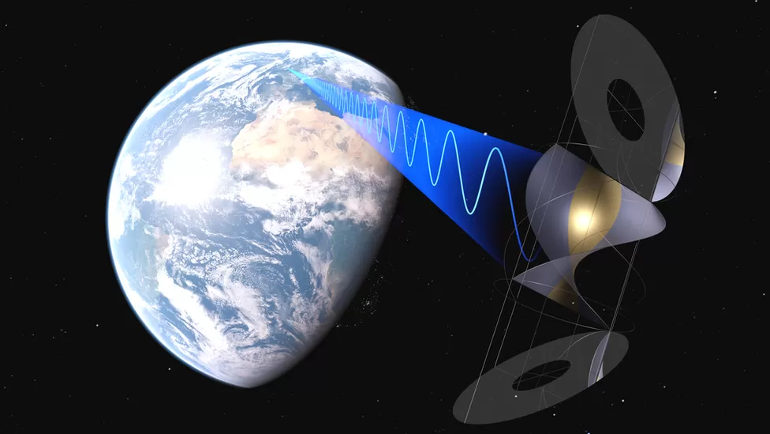
The land constraint of renewable energy infrastructure opens an exciting period of reflection and innovation for optimising both urban and rural land use, forcing us to review the value we give to interstitial spaces, brownfields and empty spaces.
This article is selected from Leonard’s bi-monthly newsletter. Subscribe to receive the full version.
